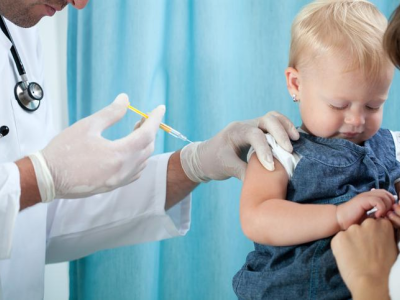Today Mandy Cohen, MD, director of the Centers for Disease Control and Prevention (CDC) said the organization was officially replacing old isolation guidelines for COVID-19 and grouping the novel coronavirus into a respiratory virus category shared with influenza and RSV (respiratory syncytial virus).
Citing lower death rates and hospitalizations, as well as high population immunity from both infections and vaccines, Cohen said it was time to approach COVID-19 infections with "simple, practical, and actionable," steps.
"If you're sick, people don't always know what virus they have," explained Cohen during a press conference today. "Stay home and away from others when you are sick. You want to return to normal activities when two things are true: Symptoms are improving overall for 24 hours, and you are fever-free for 24 hours."
If you're sick, people don't always know what virus they have.
First change to guidelines since 2021
Cohen said these recommendations are for community settings and do not apply to long-term care facilities or hospitals.
This is the first time the CDC has altered its COVID-19 guidelines, which formerly recommended reducing the 10-day isolation period to 5 days, since 2021. On May 11, 2023, the federal public health emergency for COVID-19 ended, but the 5-day isolation policy was left in place.
Since the Omicron surge of late 2021, the landscape of the virus has changed, said Brendan Jackson, MPH, CPH, the CDC's lead on respiratory virus response.
"We are in a very different place, we have effective treatments that reduce risk of serious disease by 60% or more," he said today. "COVID was the third leading cause of death in the US in 2021. In 2023 it was the tenth."
Though Jackson said in the current winter respiratory illness season COVID has caused more hospitalizations than influenza, COVID numbers are moving toward influenza levels. In the new guidelines, the CDC says weekly hospital admissions for COVID-19 this year have decreased by more than 75% and deaths by more than 90% compared to January 2022, during the peak of Omicron activity.
Both Jackson and Cohen also cited California and Oregon as examples of how the new guidelines would work. Earlier this year both states moved to ending isolation after being fever-free, and neither state has noted a strain on hospitalizations due to COVID-19.
Cohen emphasizes vaccination
Throughout today's press conference Cohen emphasized that the pillar of the new recommendations is routine vaccination against RSV, flu, and COVID-19.
"Ninety-five percent of people recently hospitalized in the last season did not get updated COVID vaccines," she said. "If you get vaccinated, we can protect you."
Cohen said only 20% to 22% of adults got the most recent updated covid vaccine, and only 49% of seniors, the group most vulnerable for severe outcomes, have received it. Yesterday the CDC published new data showing this year's COVID-19 vaccine, the monovalent (single-strain) XBB.1.5, had a vaccine effectiveness of 51% against hospitalization.
"If anything today, we are reiterating how important it is to get vaccinated," she said.
In addition to getting vaccinated, the guidelines emphasize using antiviral drugs for COVID and influenza if you're sick, as well as taking a commonsense approach to avoid spreading the virus in the 5 days after returning to normal activities. Increased air ventilation, good hand hygiene, wearing a well-fitted mask, and working remotely if possible are all mentioned as possible ways to the stop the spread.
Testing falls away
What's not mentioned in the new guidelines is testing. Once strongly promoted by the CDC, the agency is stepping away from recommending people should test if they are exposed to or suspect they have COVID-19.
"Testing is an option folks can use, but it is possible to test negative but still be shedding virus," Cohen said.
RSV, flu, and COVID are all respiratory infections with similar symptoms, and share many of the same prevention strategies, the CDC said.
"With unified guidance on COVID, flu, and RSV we are able to make sure this is easy to follow, remember it, and act on it," Cohen said.
With unified guidance on COVID, flu, and RSV we are able to make sure this is easy to follow, remember it, and act on it.
Michael Osterholm, PhD, MPH, director of the University of Minnesota's Center for Infectious Disease Research and Policy (CIDRAP), which published CIDRAP News, said he was not surprised by the CDC's change in guidelines.
"We are at an inflection point in the pandemic, where we are trying to move to a relationship with the virus that is very different than first 3 years," Osterholm said. He said he knew there would be criticism that the CDC is not following the science, but he disagrees.
"Up to 50% of transmission [involves] asymptomatic and pre-symptomatic people," he said. "And 27% of the workforce has no sick leave. The CDC guidelines are a step in the right direction as we continue to deal with COVID. We have to be aware of what we can do."













